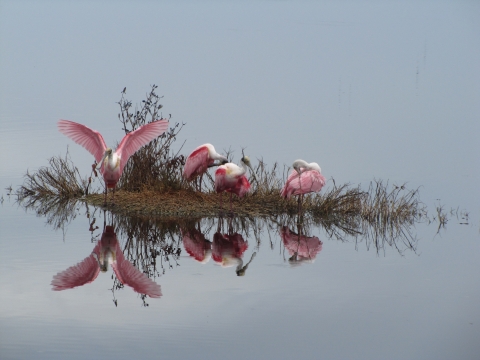Habitat restoration, Research, Resilience and risk mitigation
Working Together to Protect Coastal Georgia
Coastal Georgia’s subtropical ecosystem is a mosaic of barrier islands, marsh hammocks, freshwater wetlands, salt marshes, estuaries, and rivers. Marsh hammocks were named as one of the most endangered landscapes by Scenic America, a national conservation organization.
Coastal Georgia is home to:
- Six counties that front the Atlantic Ocean and eleven counties have tidal shoreline pushing nearly 60 miles inland;
- 100 miles of direct coastline, thirteen barrier islands, and nearly 2000 miles of tidal shoreline;
- Over 367,000 acres of estuarine wetlands, including one-third of the eastern seaboard saltmarshes;
- At least 120 rare species including 18 T/E species such as the woodstork, manatee, indigo snake, and flatwoods salamanders, and provides 8 months of wintering habitat for the piping plover;
- 9 coastal National Wildlife Refuges including the Okefenokee National Wildlife Refuge;
- 3 active military installations including the US Army’s Fort Stewart, the Marine Corps’ Townsend Bombing Range, and Kings Bay Naval Base;
- The Cumberland Island National Park and Wilderness Area, Jekyll Island State Park, Sapelo Island and Ossabaw Island State Natural Areas;
- Gray’s Reef NOAA National Marine Sanctuary;
- The Nature Conservancy Altamaha River Bioreserve;
- Over a half million people permanent residents;
- Seaports that produce more than $35 billion in sales;
- Freshwater aquifers that are rapidly becoming contaminated with encroaching salt water;
- One of the most rapidly developing second home markets and coastal areas in the nation.
Many coastal species are at risk due to increasing urban development. Our team of biologists provide technical assistance to landowners, agencies and others regarding conservation of listed and at-risk species, such as wood storks, manatees, and gopher tortoises.
Related Stories & Links
8 Powerful Lessons That the Ocean Can Teach
Savannah Refuges Complex Bird List





